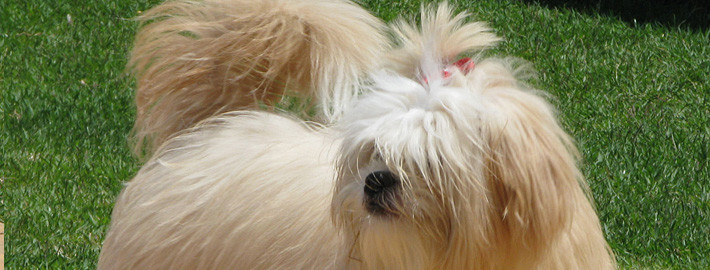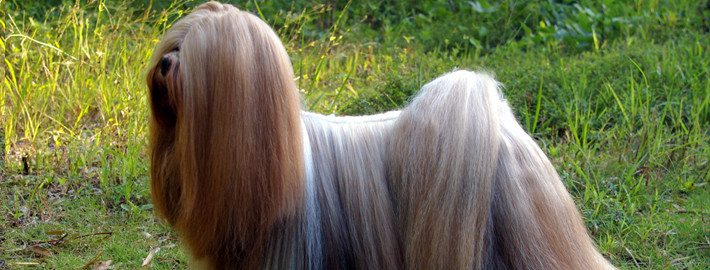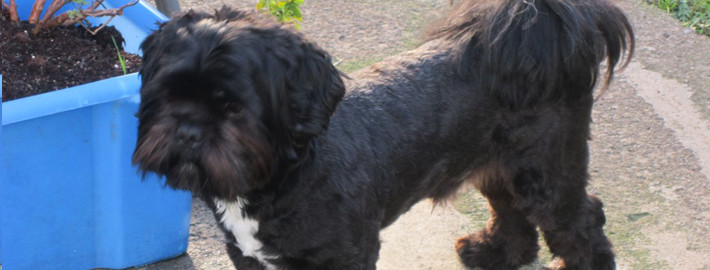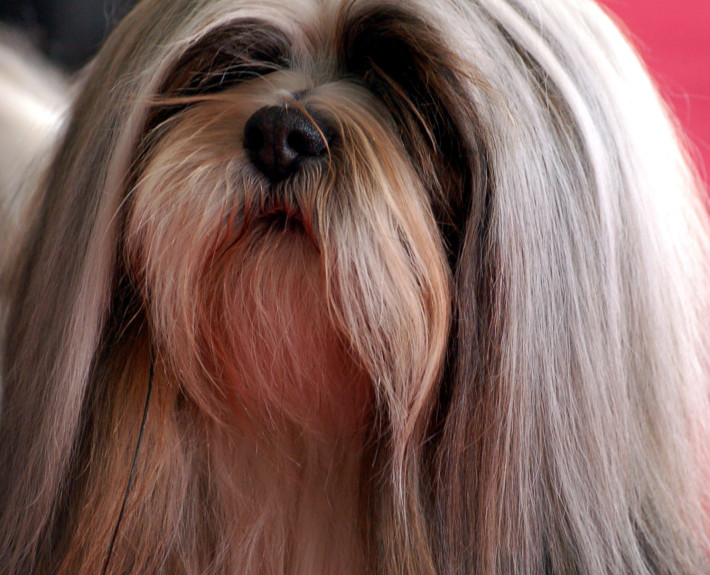What makes the Lhasa Apso Unique?
Hailing from Tibet, Lhasa Apsos have served as companions and watchdogs for both the Buddhist monk community and the indigenous aristocracy for thousands of years. It also perfectly clear that these “lion dogs” were bred for their lovely appearances and their hardy dispositions.
Page Contents
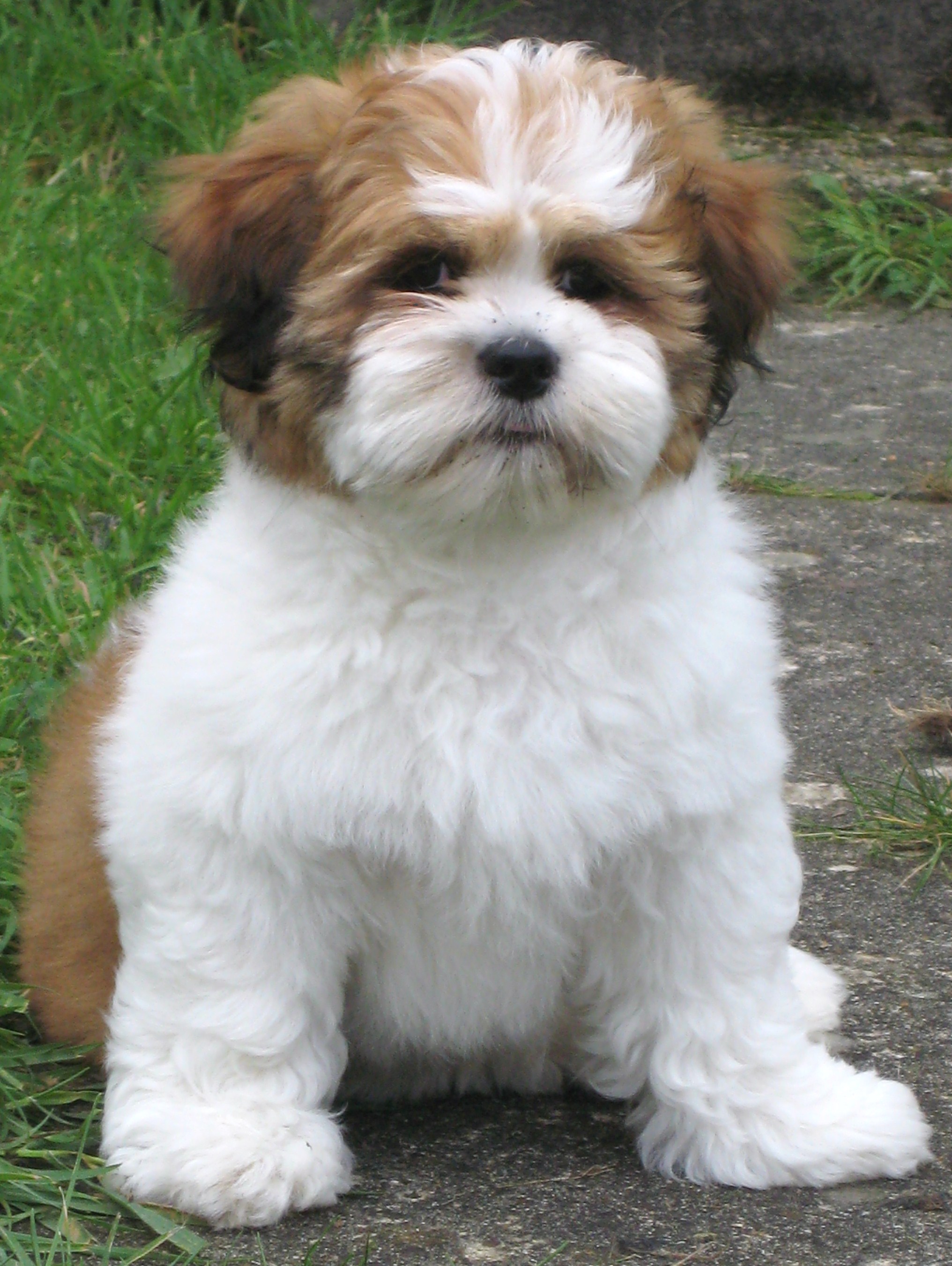
Is the Lhasa Apso Right For You?
These spirited little dogs can be quite adventurous companions but they will be just as happy to snuggle up with their humans on the couch as they are to play games with them. While Lhasa Apsos aren’t the sort to warm up to everyone, they make loyal, affectionate family members. These dogs are said to get along very well with other pets and older children who know how to handle them carefully. However, the same cannot be said in regards to strangers. Given their early history as watchdogs, it is not surprising that members of this breed tend to view unfamiliar people with suspicion. Early exposure to wide variety of people and animals will be needed to keep this trait from becoming problematic.
In 5 Words
- Lively
- Alert
- Spirited
- Playful
- Steady
Characteristics
Learn About the Lhasa Apso
Description
General Description
Lhasa Apsos are small, furry canines with bodies that lie close to the ground. These dogs have sturdy, athletic appearances despite the fact that they were not bred as sporting animals. Their limbs are proportionate in relation to the rest of their bodies. Members of this breed possess sizeable heads covered in fur, square muzzles, black lips, and black noses. Dark brown, average sized eyes are another breed feature. These dogs additionally possess well feathered ears that hang down on either side of their head. They also have cat like feet and high set, feathery tails that curl over their backs.
Size
Most Lhasa Apsos stand between 10 and 11 inches (25.4 and 27.9 centimeters) in height. It is also typical for these dogs to weigh anywhere between 12 and 18 pounds (5.44 and 8.16 kilograms). As is the case with many breeds, the female animals are naturally somewhat more petite than their male contemporaries.
Coat
A double coat is present on members of this breed. It consists of a long, thick outer layer that hangs straight on their bodies and an inner layer that is comprised of short, velvety fur. Lhasa Apsos are typically gold or cream colored but their coats can be just about any hue.
Short History of the Lhasa
Lhasa Apsos were domesticated from small wolves over four thousand years ago and they subsequently hold the title for being one of the world’s oldest dog breeds. These dogs were traditionally thought to be able to house the soul of a deceased lama until he could be reincarnated. As a possible result, Lhasa Apsos were typically given as presents rather than sold for profit. Members of this breed largely remained in their homeland until the early part of the 20th century when they were brought to Europe. During this period of history, Lhasa Apsos, Shih Tzus and Tibetan Terriers were regarded as one breed. These varieties achieved individual recognition during the 1930s. Around the same time, the breed arrived in America. Lhasa Apsos were officially acknowledged by the American Kennel Club (AKC) in 1935. At first, these dogs were classified as terriers but they were later moved to the non-sporting group. Members of the Lhasa Apso breed made their way to Australia three decades later.
Temperament
Despite their angelic features, Lhasa Apsos are known to be fearless, strong-minded, and stubborn. These spirited little dogs can be quite adventurous companions but they will be just as happy to snuggle up with their humans on the couch as they are to play games with them. While Lhasa Apsos aren’t the sort to warm up to everyone, they make loyal, affectionate family members. These dogs are said to get along very well with other pets and older children who know how to handle them carefully. However, the same cannot be said in regards to strangers. Given their early history as watchdogs, it is not surprising that members of this breed tend to view unfamiliar people with suspicion. Early exposure to wide variety of people and animals will be needed to keep this trait from becoming problematic.
Caring for Your Lhasa Apso
General Health
A lifespan of 13 or more years is common in members of this breed. However, some of these dogs do suffer from allergies. Owners should also keep an eye out for more serious health problems such as hip dysplasia, patellar luxation, and intervertebral disc disease. Eye ailments including cherry eye, progressive retinal atrophy, glaucoma, and dry eye have also been known to appear in Lhasa Apsos from time to time. Of course, annual vet visits are a good way to help spot health issues before they become serious and anyone that plans on purchasing a puppy should be sure that the parents of the individual have been certified free of all possible diseases before being bred.
Care
Daily
Lhasa Apsos have only moderate energy levels and a short daily walk will generally suit them just fine. These dogs may also enjoy romping around outside in a securely fenced in area. Full coated members of this breed will also need to be brushed on a daily basis in order to keep their fur from getting all tangled up.
Weekly
All dogs benefit from having their teeth cleaned a few times per week. Lhasa Apsos also need to have their eyes and ears cleaned with a vet approved product on a regular basis.
Monthly
Lhasa Apsos will need a monthly haircut to eliminate any excess fur on their feet and faces. The hair in their ears may likewise require a trim. Of course, these dogs should be given parasite prevention medicines on a monthly in order to protect them from pests.
Grooming & Bathing
Lhasa Apsos owners that want to minimize their dog’s grooming requirement will probably to have their pet’s fur clipped into a puppy cut. Regularly using dry shampoo on these dogs will also help keep the dogs looking clean and tidy. Members of this breed should additionally have their toenails clipped on a regular basis to keep them from incurring otherwise avoidable injuries.
Exercise & Training
Members of this breed are known for their stubborn natures and, as a result, some can be quite difficult to train. These dogs are particularly slow learners so owners will need to have patience when teaching their pet what is expected of them. Treats and lavish praise are both excellent ways to get Lhasa Apsos to pay attention to their lessons. However, instruction periods will still need to be kept short and interesting. Otherwise, these intelligent dogs may grow bored and ignore what their humans are saying.
Poorly trained Lhasa Apsos have a tendency to think that they are in charge of the household. This erroneous belief can produce undesirable behaviors such as intolerance of children, strangers, or other dogs. Members of this breed may additionally fall prey to separation anxiety, excessive barking, and/or food guarding tendencies if their owners let them get away with too much. Lhasa Apsos clearly require consistent rules and a firm hand. It is also a good idea to make sure that these dogs receive plenty of mental stimulation and physical exercise to keep them from indulging in unwanted behaviors. However, members of this breed can be extremely obedient pets if they have been properly taught.

